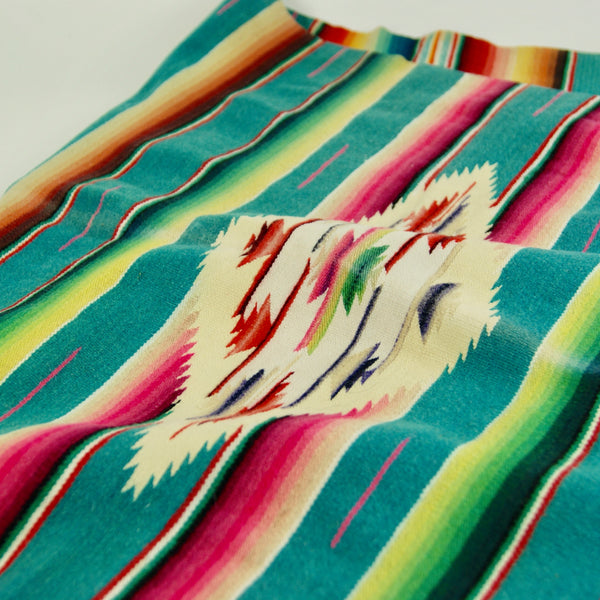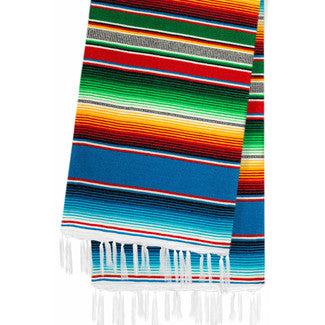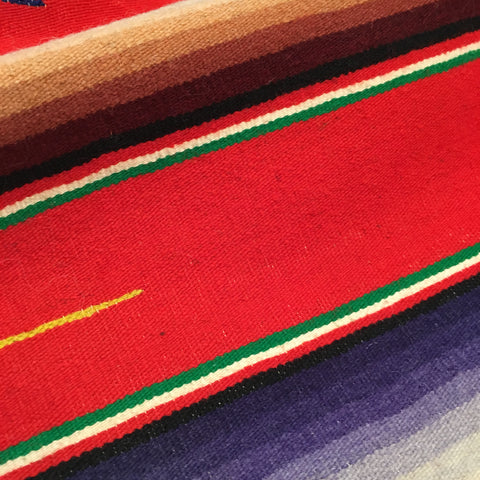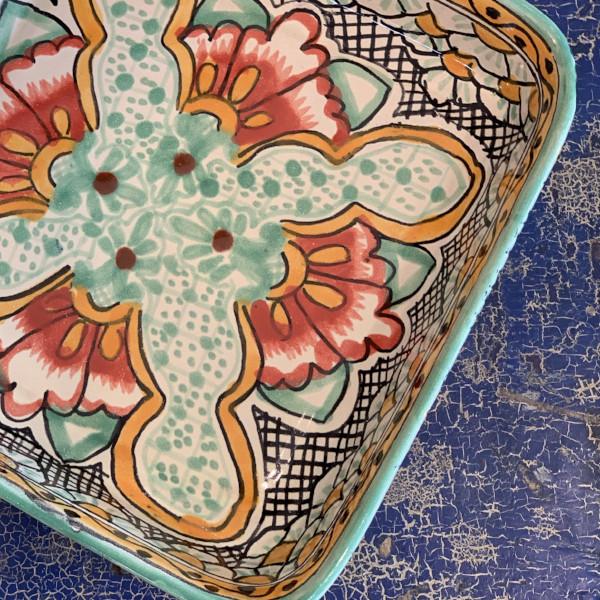
You can’t help but admire an object that can be used for sitting, for sleeping, for wearing, for creating privacy, for protecting your horse, for blocking sunlight or even for decorating your living room. Colorful striped Mexican Saltillo blankets have long been prized for both their beauty and their high level of functionality. But what exactly makes it a Saltillo blanket?
Shop our Current Collection of Mexican Textiles
All they way back to the 1500s, the Aztecs were wearing colorful blankets created out of cotton and agave fibers, and dyed bright colors using the crushed fruits and insects. It was believed at the time that wearing bright colors both brought favors from the gods, and kept evil spirits at bay. The blankets were originally woven in the town of Saltillo, in what is now the state of Coahuila. Saltillo blankets always feature a beautiful diamond shape in the center of the blanket that is woven like a tapestry--hand picking the warp and weaving in the colors in either silk or cotton. The blankets of similar style which feature greys, browns, and tans came from the higher mountainous regions of Mexico where the colors were dependent on the natural wool fibers.
Even through the 1800s, the Saltillo blankets, historically worn more often by men as ponchos and used as accessories to accompany them as they rode their horses, were woven using traditional methods, sometimes taking as long as two years to create. At that time, the natural fibers of wool and cotton were still used, as were natural dyes. They were woven in two panels that were sewn together, and also often featured a diamond-shaped pattern in the center.
Today most Saltillo serapes are woven using a cotton acrylic mix. The foot pedal looms introduced to Mexico by the Europeans in the 16th century, allow for a larger size of serape than the back strap looms permitted. Back strap looms were frequently used by the mainly indigenous people who do the weaving.
Shop Our Current Collection of Mexican Textiles
In the last few years, the “Boho” decorating style has given rise to increased production and sales of the cheaper, imitation Saltillo blankets. The bright colors and stripes of the blankets are cheery but they are imitations of a time consuming and difficult tapestry process that was (and continues to be) located in the city of Saltillo, Mexico.
While countries like China and Guatemala work to produce cheaper versions of saltillo serapes, as in the photo below, Mexico tries to protect the work of traditional craftspeople who make them, and considers imitations to be a form of trademark infringement.
Fun Fact: The large sections of color in an authentic Saltillo blanket are often separated by the colored stripes of Mexico’s national flag—red, white and green. Look at any Saltillo blanket, serape, table runner and you will likely see this acknowledgement of patriotism!
**We occasionally sell vintage Saltillo blankets but do not regularly stock them. If we have any in stock, they would appear on our Vintage page.
Shop our Current Collection of Mexican Textiles





